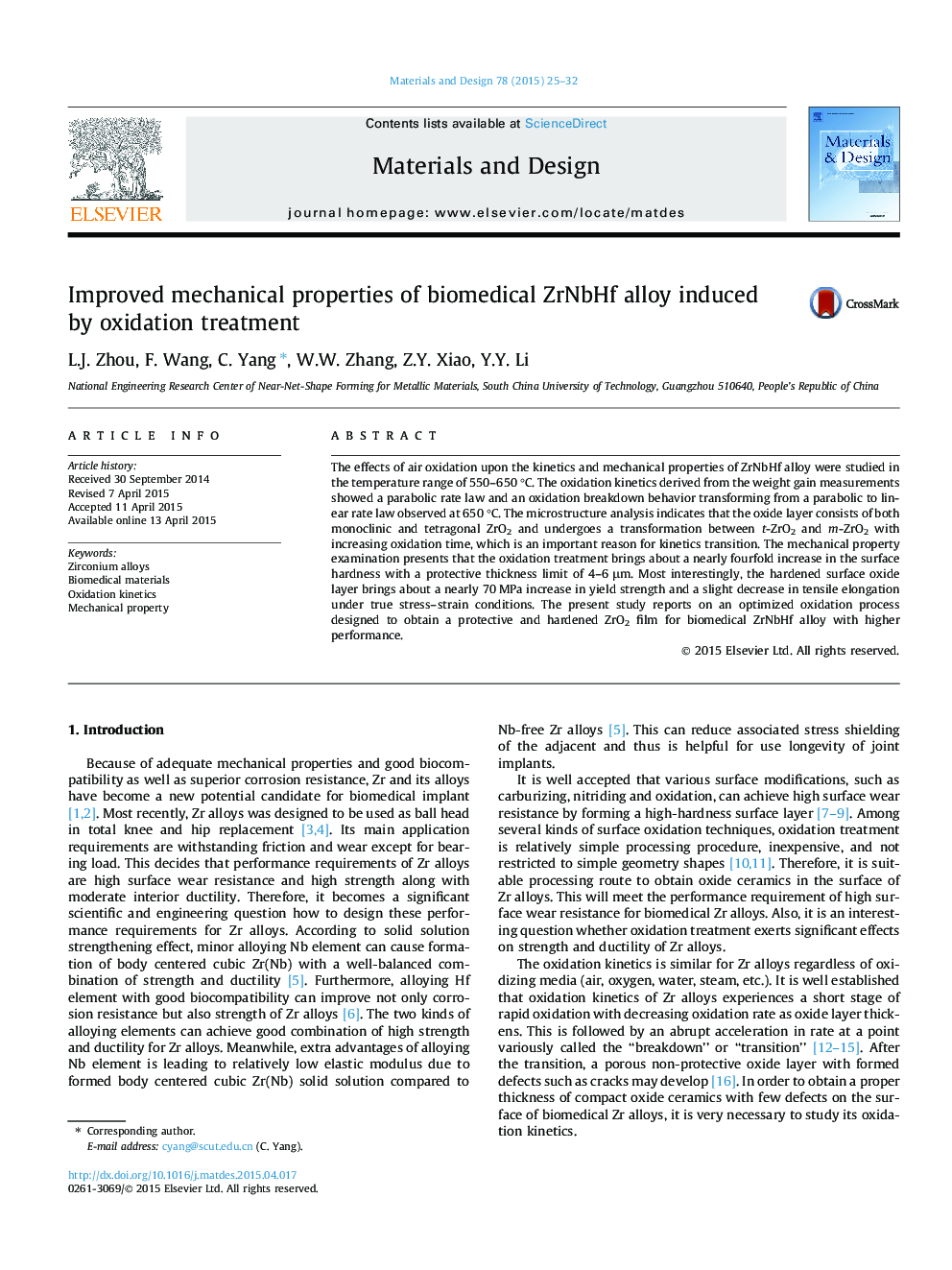| Article ID | Journal | Published Year | Pages | File Type |
|---|---|---|---|---|
| 828565 | Materials & Design (1980-2015) | 2015 | 8 Pages |
•Adherent oxide film of several microns in thickness was formed by oxidation.•Oxidation kinetics test provides correct prediction of the critical oxide thickness.•The hardness of the formed oxide film is 4 times of the base alloy.•Formed oxide film improves obviously mechanical properties of biomedical Zr alloy.
The effects of air oxidation upon the kinetics and mechanical properties of ZrNbHf alloy were studied in the temperature range of 550–650 °C. The oxidation kinetics derived from the weight gain measurements showed a parabolic rate law and an oxidation breakdown behavior transforming from a parabolic to linear rate law observed at 650 °C. The microstructure analysis indicates that the oxide layer consists of both monoclinic and tetragonal ZrO2 and undergoes a transformation between t-ZrO2 and m-ZrO2 with increasing oxidation time, which is an important reason for kinetics transition. The mechanical property examination presents that the oxidation treatment brings about a nearly fourfold increase in the surface hardness with a protective thickness limit of 4–6 μm. Most interestingly, the hardened surface oxide layer brings about a nearly 70 MPa increase in yield strength and a slight decrease in tensile elongation under true stress–strain conditions. The present study reports on an optimized oxidation process designed to obtain a protective and hardened ZrO2 film for biomedical ZrNbHf alloy with higher performance.
Graphical abstractFigure optionsDownload full-size imageDownload as PowerPoint slide
